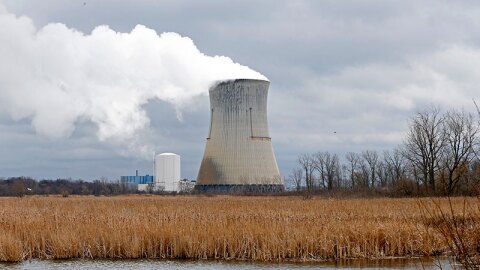First Energy Solutions says it’s going to shut down its nuclear power plants, and that means decommissioning them. Decommissioning is a lengthy, complex process with public-safety ramifications that by law must be done under the oversight of the Nuclear Regulatory Commission.
Billy Dickson, the NRC’s regional chief of projects, was at the central library in Perry, Ohio, last week for a regularly-scheduled annual public report on the safety and operating performance of nearby Perry Nuclear Power Plant. After the meeting, Dickson spoke about how the decommissioning will be handled and whether oversight at the plant will be adjusted now that First Energy Solutions has filed for bankruptcy.
Dickson says the NRC has its standard procedures for overseeing nuclear power facilities and those won’t change – but after being advised by First Energy Solutions of its intention to close its nuclear plants, they have some specific questions.
“We have developed an inspection plan that’s going to look at any operations that could be affected by any kind of money woes,” Dickson says.
He says the NRC is also ramping up what he calls its “looks” at areas like whether or not the operator is maintaining adequate staffing, and “making sure that the corrective actions program (operators use it to report operating problems) remains healthy.”
Decommissioning takes time, though – “up to sixty years,” according to Dickson. Although he says, for purposes of creating a comprehensive decommissioning plan, the operator is usually given two years from the time it announces its intention to shut down.
That plan has to be reviewed by the public. And, he says, any subsequent modification of it are subject to public review as well.
Decontamination is the ultimate goal of decommissioning, Dickson says. The strongest radiation from nuclear plants comes from the fuel rods, so those are the first to go. The rods are put into secure casks for long-term storage, then the rest of the site, including any contaminated soil, must be remediated.
The site must have no greater radioactivity level exposure than 25 Millirems per year—about five percent of what the average American is exposed to annually from all sources. Even then, the NRC’s job isn’t done.
“The NRC does not just go away,” Dickson says. “Even through the decommissioning process itself, we still have inspectors making sure the public is safe.”




